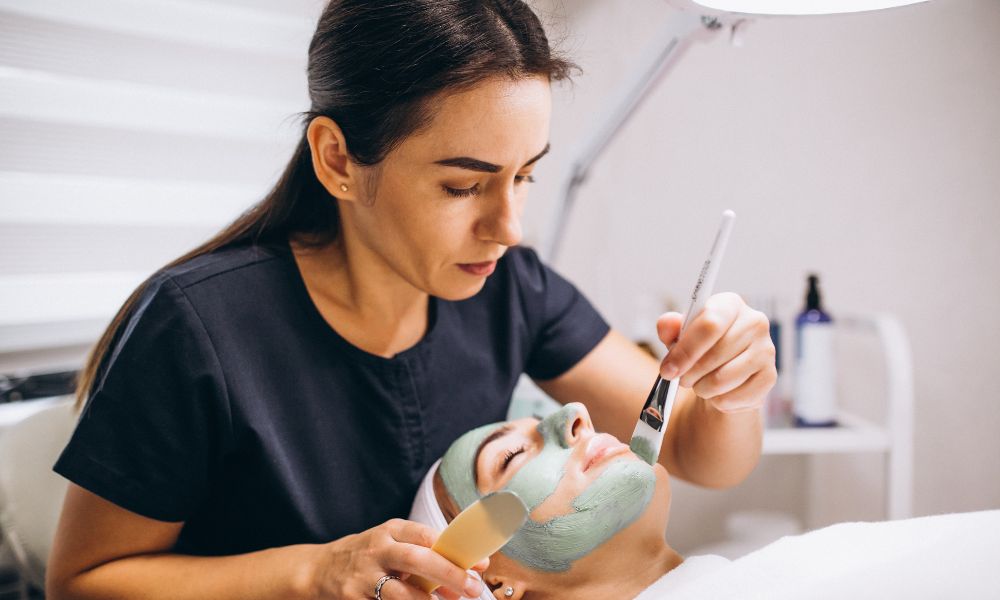Behind every flawless makeup look lies an often-overlooked step—skin preparation. While products like foundations, concealers, and highlighters may grab attention, professional makeup artists know that prepping the skin is the true secret to achieving long-lasting and camera-ready results. Without proper prep, even the most high-end products can fail to perform as intended. Skin preparation not only enhances makeup application but also ensures the skin remains healthy and radiant underneath.
The Importance of Skin Preparation in Makeup
Skin is the canvas upon which makeup is applied. Just as an artist primes a canvas before painting, makeup artists prepare the skin to create a smooth, even surface. Proper skin prep:
- Minimises texture and dry patches.
- Ensures makeup adheres better and lasts longer.
- Creates a natural, glowing finish.
- Protects the skin from potential irritation caused by long hours of makeup wear.
By investing time in this step, professionals can guarantee makeup that looks polished and feels comfortable.
Key Steps in Professional Skin Preparation
1. Cleansing
A clean base is non-negotiable. Dirt, oil, and leftover skincare can interfere with how makeup sits on the skin. Makeup artists begin by gently cleansing the face to remove impurities, ensuring a fresh canvas.
2. Exfoliation
Exfoliating removes dead skin cells, which can cause makeup to cling unevenly. Professionals often use mild exfoliants to reveal smoother skin, making foundation application seamless.
3. Toning
A toner balances the skin’s pH levels and tightens pores. This step refines texture, allowing makeup to glide effortlessly. For sensitive skin, artists may choose alcohol-free, calming toners.
4. Moisturising
Hydration is vital for all skin types, even oily ones. A lightweight gel moisturiser may suit oily skin, while richer creams benefit dry skin. Moisturiser plumps the skin, reducing fine lines and preventing foundation from settling into creases.
5. Priming
Primer acts as a bridge between skincare and makeup. It smooths uneven texture, controls oil, and enhances the longevity of makeup. Professionals select primers tailored to the client’s skin—mattifying primers for oily skin, hydrating primers for dry skin, and pore-filling primers for uneven texture.
Tailoring Skin Prep to Different Skin Types
- Oily Skin: Requires oil-control products, lightweight moisturisers, and mattifying primers to combat shine.
- Dry Skin: Benefits from extra hydration, gentle exfoliation, and dewy primers that add luminosity.
- Combination Skin: Needs a targeted approach—hydrating products for dry zones and mattifying ones for oily areas.
- Sensitive Skin: Demands gentle, fragrance-free products that soothe rather than irritate.
This personalised approach ensures that the makeup not only looks flawless but also feels comfortable for the wearer.
The Science Behind Skin Prep and Makeup Longevity
Makeup longevity heavily depends on how well the skin is prepared. Cleansing removes barriers, exfoliation ensures smooth texture, and moisturising balances hydration. Primers further enhance adhesion, acting like a grip for foundation and powders. When the skin is prepped correctly, makeup resists fading, creasing, and oxidising, even under harsh lighting or long hours. This science-backed approach is why professional makeup artists never skip preparation.
Common Mistakes People Make with Skin Preparation
Even those who know the importance of skin prep sometimes fall into common traps:
- Over-Exfoliating: This can cause redness and irritation, making makeup harder to apply.
- Skipping Moisturiser: Oily skin still needs hydration—skipping moisturiser often leads to excess sebum production.
- Using the Wrong Primer: Not all primers are universal; mismatching them with skin type can backfire.
- Rushing the Process: Skincare products need a few minutes to absorb fully before applying makeup.
Avoiding these mistakes ensures that skin prep works as intended.
Why Professionals Prioritise Skin Prep
For makeup artists, skin preparation is not optional—it’s the foundation of their craft. A well-prepped face not only makes makeup easier to apply but also enhances the client’s confidence. When skin feels smooth, hydrated, and comfortable, the makeup appears more natural and refined. Professionals know that perfect makeup isn’t just about skillful blending—it’s about starting with the right base.
Aditi Dubey
Aditi Dubey is a leading makeup artist in Dwarka, renowned for her bridal and traditional makeovers that combine timeless elegance with modern trends. With global exposure and a background in aviation, she brings a unique perspective to beauty. Alongside her artistry, she trains aspiring professionals through her courses. As a mentor, entrepreneur, and mother, Aditi empowers women by enhancing confidence and creating graceful, unforgettable looks.
Conclusion
Skin preparation is the hidden weapon behind every stunning makeup look. By cleansing, exfoliating, toning, moisturising, and priming, makeup artists create the ideal canvas for their artistry. Tailoring prep to individual skin types ensures comfort, longevity, and a polished finish. Whether it’s for a bride, a model, or a photoshoot, professionals never underestimate the power of prep. If you want your makeup to look its best, remember—the secret starts with your skin.
Related Post: How Makeup Artists Collaborate with Photographers, Stylists, and Models

